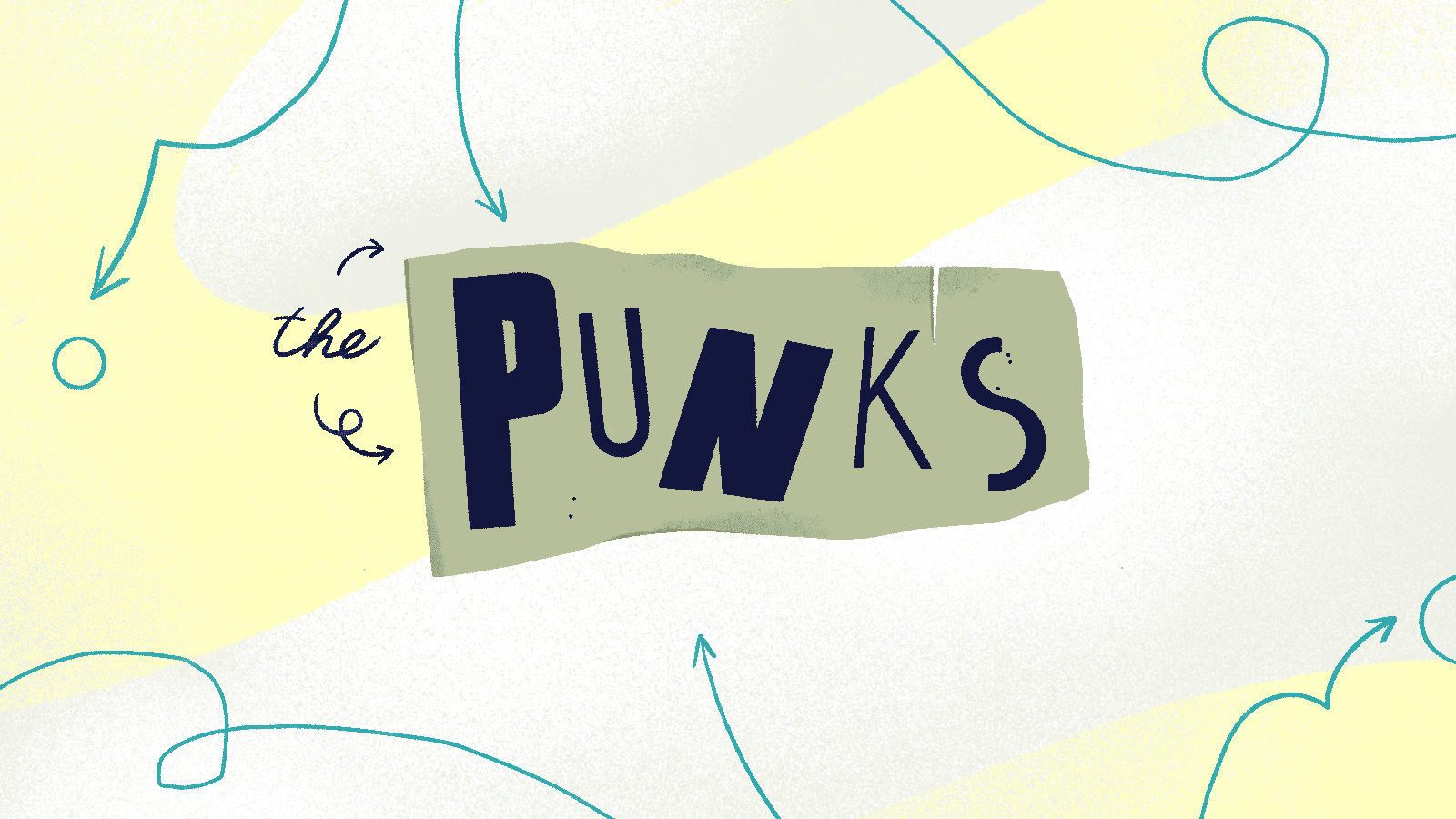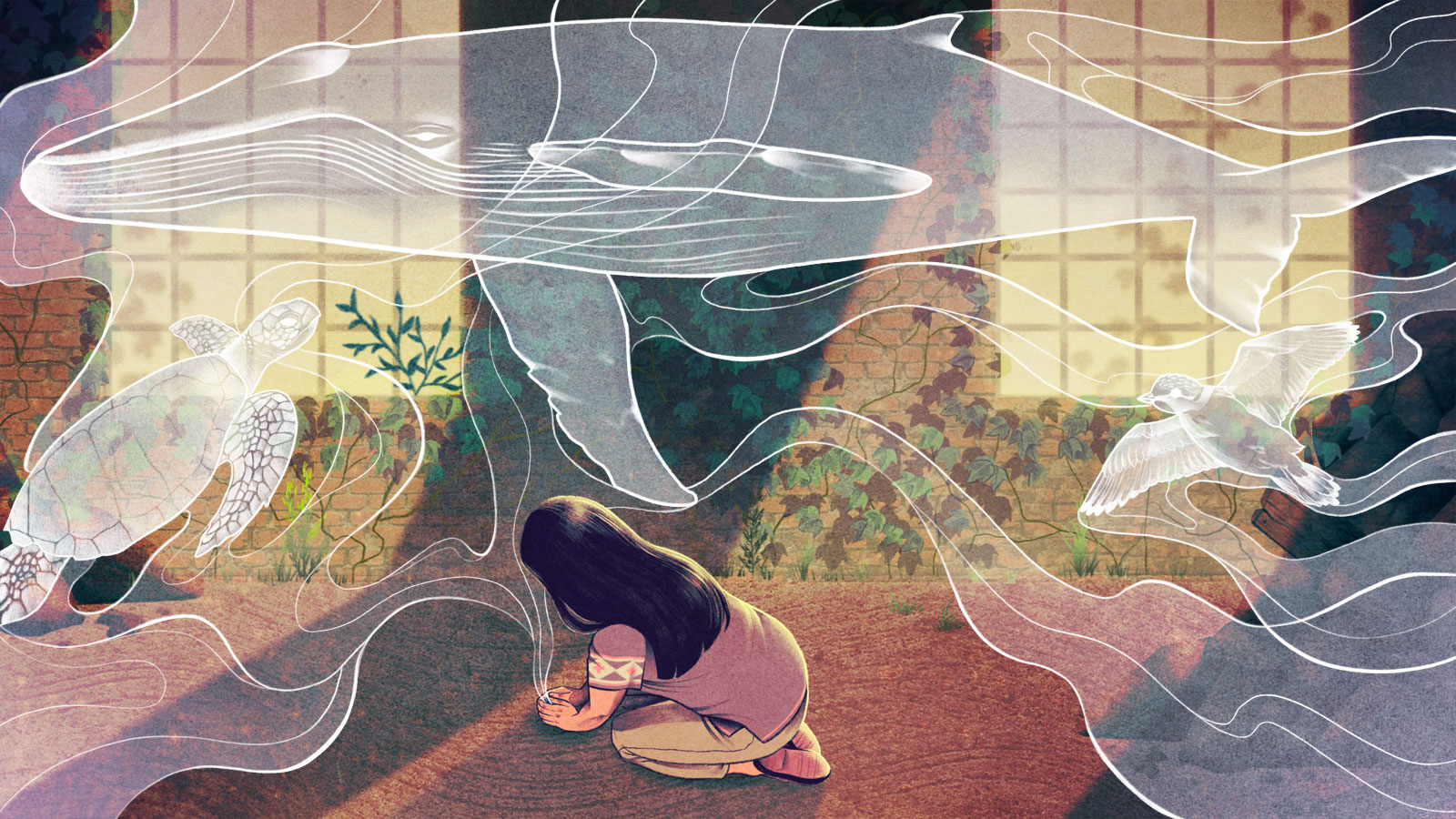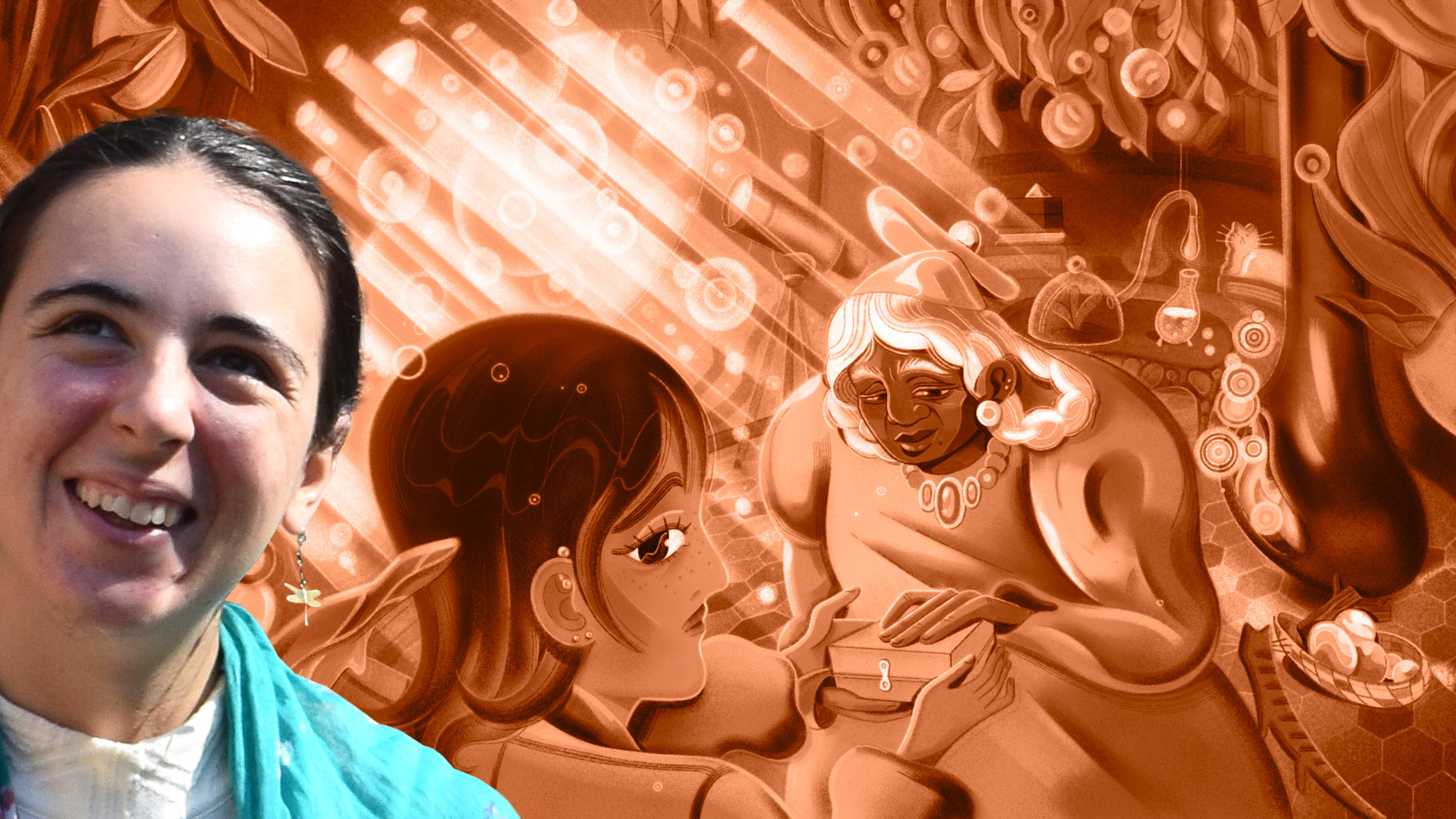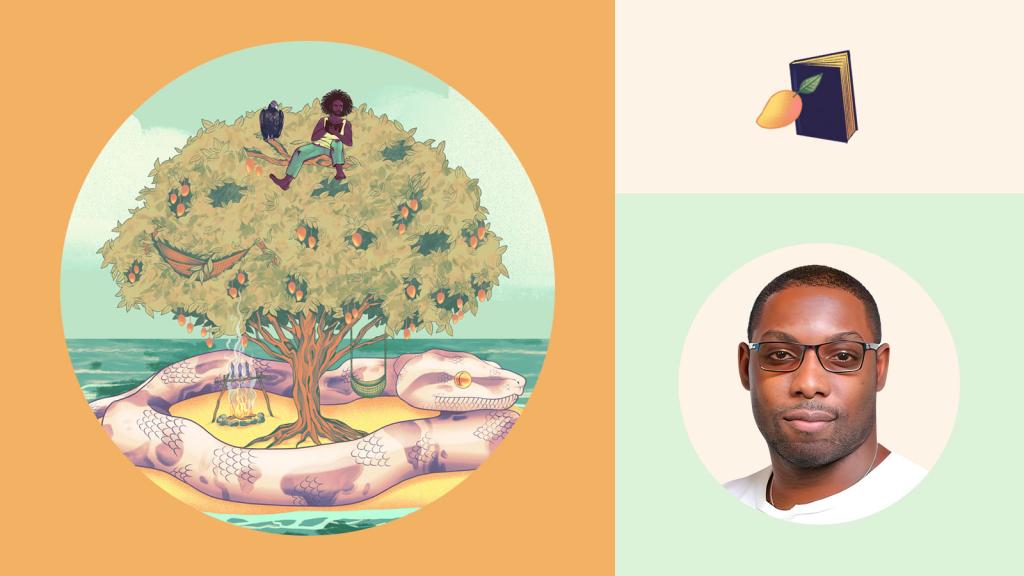This story is part of Fix’s Climate Fiction Issue, which explores how fiction can create a better reality. Check out the full issue here, including the short stories in Fix’s first-ever climate-fiction contest, Imagine 2200.
Climate fiction, or cli-fi for short, has emerged as an increasingly popular genre that puts environmental issues front and center. Although often considered a subgenre within science fiction, it has long since moved beyond that realm as the impacts of a warming world, once thought far off, have become commonplace.
With the boundlessness that fiction offers, writers and artists can use it as a vehicle to imagine a better future and the path we might take to get there. Or, they can model the kind of resilience and adaptation humanity will need in coming decades.
Below, we’ve categorized some of the genres and movements that inspire and inform climate fiction and reveal just how intersectional it is.

As its name suggests, futurism refers to art that imagines the future. It originated with an Italian art movement in the early 20th century that celebrated modernity and technological advances like aviation and cinematography. Contemporary fiction that embraces the idea often envision worlds that center justice and cultural identities alongside technology.
Afrofuturism
Broadly speaking, Afrofuturism is a literary genre, aesthetic, and musical and cultural movement that celebrates Black traditions and culture. It was the first “-futurism” rooted in a racial and cultural identity, and it has since encouraged other communities to envision their own futures.
The term, however, has troubled origins. White author and critic Mark Dery coined it in his 1994 essay “Black to the Future,” in which he asked, “Can a community whose past has been deliberately rubbed out, and whose energies have subsequently been consumed by the search for legible traces of its history, imagine possible futures?”
Some scholars, like poet and professor Hope Wabuke, argue that Afrofuturism is bound by the white gaze and limited to views of the African American experience that began in 1619. But despite criticism, Afrofuturism has moved into the mainstream, and many consider it an empowering manifestation of unapologetic Blackness.
Find it in:
- Black Panther — the comic book and hit Marvel movie
- “Dirty Computer” — a studio album and “emotion picture” by Janelle Monae
- Lilith’s Brood — also called the Xenogenesis trilogy, a compilation of three works by Octavia Butler: Dawn, Adulthood Rites, and Imago
- “Black Futures: An Ode to Freedom Summer” — a short film created by the Movement for Black Lives
Africanfuturism
Africanfuturism highlights African culture, history, and mythology. Author Nnedi Okorafor created the term in 2019 as a label that looks beyond the United States and its conceptions of Blackness. Although rooted on the African continent, this subgenre encompasses the African diaspora — without focusing on or privileging Western experiences. Okorafor explains the difference as, “Afrofuturism: Wakanda builds its first outpost in Oakland, California. Africanfuturism: Wakanda builds its first outpost in a neighboring African country.”
Find it in:
- Lagoon, Zahra the Windseeker, and the Binti trilogy — all novels by Okorafor
- The Old Drift — a novel by the Zambian writer Namwali Serpell
- The Ear, the Eye, and the Arm — a popular children’s novel by Nancy Farmer
Indigenous futurism
Conceived by Anishinaabe scholar Grace Dillon in 2012, Indigenous futurism is a multimedia movement that places Indigenous knowledge, art, practices, and identities at the center of science-fiction narratives. Dillon originated the term in her 2012 collection Walking the Clouds: An Anthology of Indigenous Science Fiction.
“All forms of Indigenous futurisms are narratives of biskaabiiyang, an Anishinaabemowin word connoting the process of ‘returning to ourselves,’” she writes in the book’s introduction, “which involves discovering how personally one is affected by colonization, discarding the emotional and psychological baggage carried from its impact, and recovering ancestral traditions in order to adapt in our post-Native Apocalypse world.”
Find it in:
- “Indigenous Futurisms: Transcending Past/Present/Future” — an online art exhibit
- Moonshot, Volume 3: The Indigenous Comics Collection — a graphic anthology edited by Dillon’s daughter, Elizabeth LaPensée
- “Time TravellerTM” — a multiplatform story by artist Skawennati
Disabled futurism
Disabled or “crip” futurism focuses on the perspectives of differently abled people, and affords an opportunity to imagine a more accessible world. This does not mean one in which technology or medical advancements have eliminated disability. Assistive technologies may appear in some works, but the greater exploration of crip futurism is how society may become more compassionate and accommodating — or how disability can ensure survival in a changed world. “A utopia should not be a place where no one is physically impaired or neurologically different,” notes the writer Nicola Griffith.
The author Kenny Fries invented the so-called Fries Test for disabled fiction. Much like the Bechdel Test for representation of women in fiction, it asks whether a work features more than a single disabled character; whether those characters serve a narrative purpose beyond educating or benefiting other characters; and whether those characters’ disabilities are not eradicated by curing or killing. Any work that checks all those boxes qualifies as representative disabled fiction. Set it in the future, and you’ve got crip futurism.
Find it in:
- Accessing the Future — an anthology of stories and artwork that portray disability and mental illness in science-fiction futures
- Chrysalids — a 1955 novel by John Wyndham
- Cast From the Earth — a post-apocalyptic novel by Leandra Vane
Queer futurism
Queer futurism imagines futures from the perspectives of LGBTQ+ people and celebrates queerness in worlds where all genders and sexualities are embraced. In a 2018 essay making a case for the genre, author Matthew Gallaway wrote: “As with afrofuturism, queer futurism is not just an artistic movement about the future, it’s about what we can do now to reshape the past with possibility and in this way discover the new and better worlds of our collective gay dreams.”
Find it in:
- Maiden, Mother, Crone: Fantastical Trans Femmes — an anthology edited by Canadian poet and activist Gwen Benaway
- #gods — a 2017 novel by Matthew Gallaway
- Gideon the Ninth — and the entire Locked Tomb trilogy by Tamsyn Muir

“Punk” as a literary term has roots in the punk-rock scene of the 1970s. Bands like The Ramones, The Clash, and The Dead Kennedys inspired an aesthetic and a counterculture movement, which in turn sparked a handful of literary genres. In general, anything labeled “punk” is anti-establishment, rebellious, and transgressive.
Cyberpunk
Cyberpunk stories first appeared in the 1980s, combining high-tech advancements (the “cyber”) with some societal decay or collapse. It is generally dystopian, featuring technology gone awry or the blurring of lines between real and virtual worlds.
Bruce Bethke, who established the term in his 1983 essay of the same title, claims that he made two lists of words — one for technology, one for troublemakers — and experimented with various combos until he landed on cyberpunk.
Find it in:
- Blade Runner — a classic ’80s film based on the Philip K. Dick novel Do Androids Dream of Electric Sheep?
- The Matrix — an Oscar-winning film series that debuted in 1999
- Ghost in the Shell — an anime series by Masamune Shirow, which was made into a live action film in 2017
Solarpunk
Solarpunk, which originated in the late 2000s, imagines green futures based on renewable energy and a DIY aesthetic that is true to its indie-punk roots. “Making or remaking your own clothing, growing your own food, and right-to-repair [one’s own gadgets] are ways that solarpunks reclaim their basic needs from corporate control,” says fiction writer Sarena Ulibarri, who has edited several anthologies of the genre and helped review the 1,100 entries in Imagine 2200.
Although some solarpunk art is utopian — depicting idyllic societies that have achieved sustainability and egalitarianism — solarpunk fiction doesn’t go quite that far. It may show people adapting to or making the best of challenging circumstances (like a changing climate), but it recognizes that conflict will always exist. Though it may sound more harmonious than other conceptions of “punk,” solarpunk is still about rebellion — against the fossil fuel industry and the idea that a climate apocalypse is inevitable. “When the status quo is despair and defeat,” Ulibarri says, “then hope becomes an act of resistance.”
Find it in:
- Glass and Gardens: Solarpunk Summers and Glass and Gardens: Solarpunk Winters — two anthologies edited by Ulibarri
- New York 2140 — a 2017 novel by American science-fiction writer Kim Stanley Robinson
- Dear Alice — a short film that happens to be a Chobani advertisement, but it still slaps
Ecopunk
“Ecopunk” and “solarpunk” are fairly interchangeable terms — but where solarpunk sits in the realm of sci-fi and technologically advanced futures, ecopunk may be contemporary, realistic, or fantastical. “Characters in ecopunk fiction generally fight against environmental degradation using only tools and technology actually available in the real world,” Ulibarri says. Ecopunk plotlines tend to focus on one specific ecological problem, like protecting a habitat.
Find it in:
- The Monkey Wrench Gang — a hallmark environmental novel by Edward Abbey published in 1975
- Flight Behavior — a 2012 novel by Barbara Kingsolver
- FernGully: The Last Rainforest — an animated classic released in 1992
Hopepunk
The ethos behind hopepunk challenges the narratives of cynicism and nihilism that its counterpoint “grimdark” often embraces, making simple kindness an act of rebellion. It isn’t about vanquishing evil and achieving some great peace or perfection. “It’s about being kind merely for the sake of kindness, and because you have the means to be, and giving a fuck because the world is (somehow, mysteriously, against all evidence) worth it and we don’t have anywhere else to go anyway,” writes fantasy author Alexandra Rowland, who coined the term in 2017.
Find it in:
- A Choir of Lies — the sequel to Rowland’s A Conspiracy of Truths, written with hopepunk in mind
- Blackfish City — a 2018 novel by Sam J. Miller
- Sense8 — a two-season Netflix series that debuted in 2015

A topia is simply a place with specified characteristics. (From the Greek topos, meaning place.) In cli-fi and other fiction, we can think of the topia as the setting — whether idyllic, disturbing, or something in between. Genres that use “topia” as a suffix usually involve extensive world-building, making the setting a major part of the story.
Utopia
Dictionaries define utopia as “the good place.” Etymologically, it’s almost that. Although the Greek prefix eu means “good,” the word utopia is rooted in ou, meaning “not.” Invented by humanist Sir Thomas More in the early 1500s, the word was a pun — it’s nowhere. Like the imaginary island society in Utopia, the novel More wrote in 1516, it’s a perfect world that does not and cannot exist.
Because perfection can’t be achieved, and because stories without conflict are boring, the plotlines of many utopian works poke holes in or expose the seedy underbelly of a supposedly perfect society, as seen in films like The Truman Show and Pleasantville.
Despite its literal meaning, utopia may take on a new significance in the anthropocene. The climate crisis and the injustices underpinning it require a major transformation of society — and fictionalized utopias could provide some inspiration. In a recent essay in The Nation, climate-fiction author Kim Stanley Robinson wrote: “Utopias exist to remind us that there could be a better social order than the one we are in. … Having glimpsed a destination you like, you can then consider the actions available in your own time to get there.”
Find it in:
- The Dispossessed — a 1974 novel by the celebrated speculative-fiction author Ursula K. Le Guin
- Tomorrowland — a Disney movie starring George Clooney
- Black Panther — wait, haven’t we seen this before? Yep, it’s the same comic and movie, set in the Afrofuturist, utopic land of Wakanda
Dystopia
Given the Greek root dys means “bad” or “hard,” dystopia is the opposite of utopia — “the bad place.” As a noun, dystopia wasn’t used until the 1950s, though the idea (and the adjective “dystopian”) originated centuries earlier. In literature, a dystopia is a state or society characterized by suffering, injustice, or bleakness. These are often depicted as having totalitarian regimes and are sometimes set in the aftermath of an apocalypse (although dystopian fiction is distinct from post-apocalyptic fiction, which tends to show the dissolution of society, not necessarily the existence of a shitty society).
Dystopias often serve as a form of social commentary, emphasizing things like oppressive governments, police brutality, surveillance, ecological devastation, or technology gone wrong — problems that have roots in the real world.
Find it in:
- 1984 — a 1949 novel by George Orwell
- Bioshock — a video game about unfettered market capitalism and addiction
- A Clockwork Orange — the terrifying 1971 Stanley Kubrick film adapted from the novel of the same name by Anthony Burgess
Ustopia
A hybrid term created by author Margaret Atwood, “ustopia” speaks to the impossibility of a purely utopian or dystopian world. “In my view, each contains a latent version of the other,” wrote Atwood in a 2011 essay for The Guardian. Topias, in addition to being physical, mapped locations, are also states of mind. Realistically, no character in any environment is either perfectly content or perfectly miserable at all times.
For example, even Atwood’s The Handmaid’s Tale, widely considered to be a classic dystopian novel, contains a flicker of utopia, she argues: “One is in the past (the past that is our own present). The second is placed in a future beyond the main story by the afterword at the end of the book, which describes a future in which Gilead — the tyrannical republic of The Handmaid’s Tale — has ended and has thus become a subject for conferences and academic papers.”
Atwood’s logic seems to suggest that there is always hope, even in a dystopia. Similarly, there is always fear in a utopia — that it won’t last or that it may turn out to be based on something unsavory. What we’re left with, then, is ustopia.
Find it in:
- The Lorax — a classic children’s book by Dr. Seuss
- The Children of Men — a heartbreaking yet hopeful movie by Alfonso Cuarón
- The Hunger Games — the wildly popular books by Suzanne Collins, which became a series of blockbuster films
Ecotopia
An ecotopia is a form of utopia, predicated on ecological harmony. It’s also the title of a 1975 novel by Ernest Callenbach, a seminal work in this genre — if one that may have aged a bit awkwardly.
Perhaps the most niche term on this list, ecotopia could be viewed as a subgenre within a subgenre; the subset of utopia that is climate-focused. Ecotopias, or visions of them, may show up in other well-known media that wouldn’t necessarily be placed in the genre — the fairies’ rainforest domain in FernGully, for example, or the elusive “green place” in Mad Max: Fury Road.
Whether technological or agrarian, realistic or fantastical, an ecotopia is built on synergy and regeneration with its surrounding environment.
Find it in:
- Ecotopia: The Notebooks and Reports of William Weston — the pioneering work by Ernest Callenbach
- Ecotopia 2121 — an illustrated book based on a project that imagines 100 cities, 100 years from now, in their greenest, most prosperous forms
- Black Panther — our old friend, here again to show us what ecotopia looks like in the most technologically advanced country in the world. Wakanda forever.
Explore more from Fix’s Climate Fiction Issue:
- How a fictional forestlike burial ground could replace traditional cemeteries
- A glossary of need-to-know climate-fiction terms and genres
- Read the 12 winning stories of Fix’s climate-fiction contest





